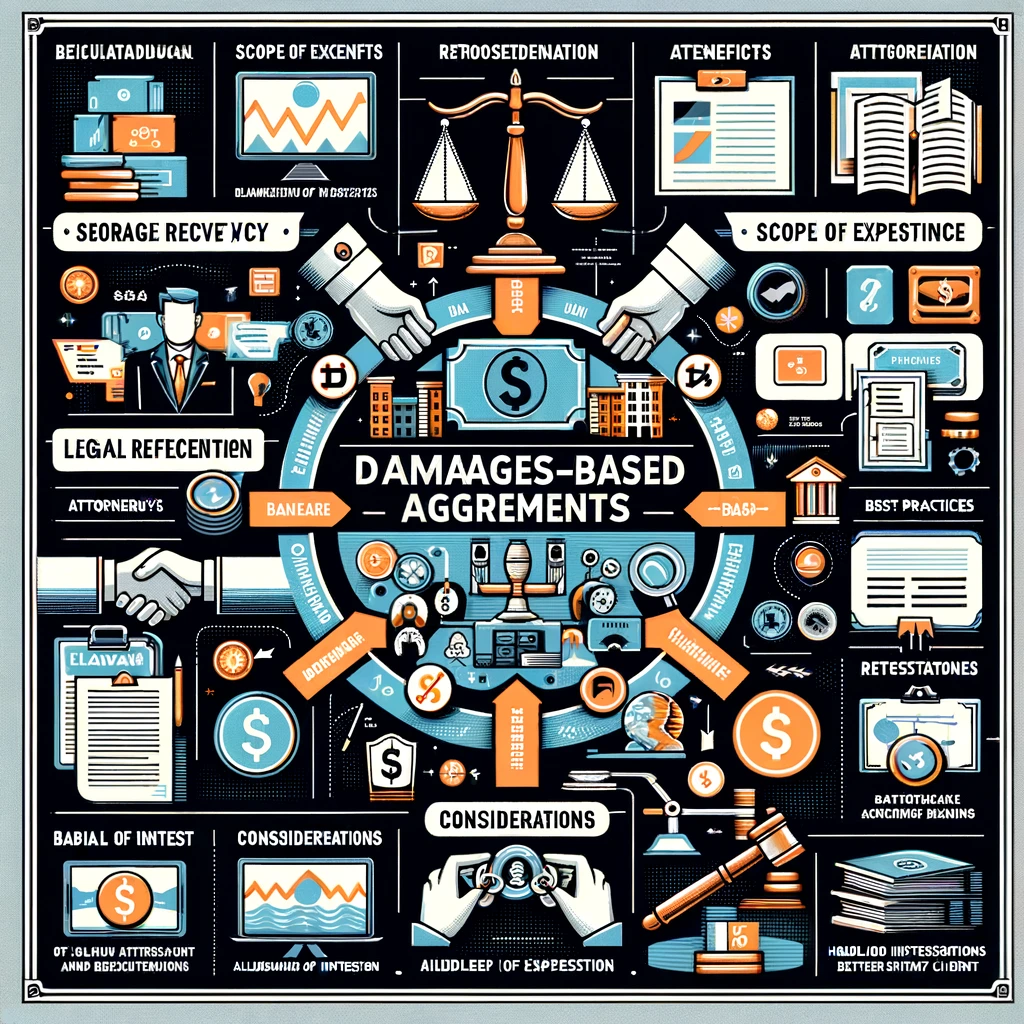Demystifying Damages-Based Agreements: A Comprehensive Guide

In the evolving landscape of legal services, Damages-Based Agreements (DBAs) have emerged as a pivotal mechanism for facilitating access to justice, particularly in complex litigation scenarios. These agreements, where lawyers' fees are contingent upon the success of a case, offer an alternative to traditional fee arrangements, aligning the interests of the attorney and client. This comprehensive guide delves into the intricacies of DBAs, providing a foundation for understanding their structure, benefits, and considerations, enhanced by authoritative sources to ensure credibility and depth.
Understanding Damages-Based Agreements
At their core, Damages-Based Agreements are a form of contingency fee arrangement permitted in various jurisdictions. Under a DBA, the legal fees are directly tied to the successful outcome of a case, typically calculated as a percentage of the damages awarded to the client. This model offers a more accessible pathway for individuals and businesses to pursue legal claims without the upfront financial burden associated with traditional fee structures.
The Legal Framework of DBAs
The regulatory landscape for DBAs varies significantly across different countries and legal systems. In the UK, for instance, the Legal Aid, Sentencing and Punishment of Offenders Act 2012 (LASPO) introduced DBAs as a permissible option in civil litigation. Similarly, in the United States, contingency fee arrangements have a long history, particularly in personal injury and class action lawsuits. Understanding the specific legal framework and regulatory requirements is crucial for both attorneys and clients considering a DBA. For an in-depth exploration of the UK's regulatory approach to DBAs, the Ministry of Justice's guidelines provide a valuable resource.
Key Components of a DBA
A well-structured Damages-Based Agreement should clearly outline several key components to ensure transparency and mutual understanding between the lawyer and client:
Percentage of Recovery: The agreement must specify the percentage of the recovered damages that will be paid as fees to the attorney.
Scope of Representation: Clearly defined legal services covered under the DBA.
Expenses and Disbursements: Handling of case-related expenses, distinguishing them from the contingency fee.
Termination Conditions: Terms under which either party may terminate the agreement and the financial implications of such termination.
For further details on the essential elements of a DBA, Cornell Law School's Legal Information Institute offers comprehensive insights.
Advantages of Damages-Based Agreements
DBAs present numerous advantages, making them an attractive option for both clients and attorneys:
Risk Mitigation for Clients: Clients can pursue legal claims without the risk of significant financial loss if the case is unsuccessful.
Alignment of Interests: Since the attorney's fee is contingent on success, there is a natural alignment of interests with the client.
Access to Justice: DBAs make legal representation more accessible to individuals and businesses that may not afford the upfront costs of litigation.
Considerations and Challenges
Despite their benefits, DBAs require careful consideration of several potential challenges:
Risk Assessment: Lawyers must thoroughly assess the merits and risks of a case before entering into a DBA.
Financial Risk for Attorneys: Attorneys bear the financial risk of litigation, which may not be suitable for all practices.
Regulatory Compliance: Compliance with the specific legal and ethical regulations governing DBAs is essential to avoid potential sanctions.
Implementing a DBA: Best Practices
To effectively implement a Damages-Based Agreement, both attorneys and clients should adhere to best practices:
Comprehensive Agreement Drafting: Ensure the DBA is comprehensively drafted, covering all essential terms and contingencies.
Transparent Communication: Maintain open and transparent communication throughout the litigation process.
Regulatory Adherence: Strictly adhere to the regulatory framework and ethical guidelines governing DBAs.

Create & Review Your Contracts 10x Quality and Ease
Lawyer-level AI handles all your contract needs, with real lawyers providing safeguarding support

Conclusion
Damages-Based Agreements represent a significant evolution in legal fee structures, offering a viable alternative that aligns the interests of attorneys and clients. By understanding the nuances of DBAs, parties can navigate the legal landscape more effectively, leveraging these agreements to access justice and pursue legal claims with confidence. For those seeking to explore DBAs further, authoritative resources such as Wikipedia's overview of contingency fees and the American Bar Association's guidelines provide valuable insights into the principles and practices underpinning these agreements.
By embracing the opportunities and navigating the challenges associated with Damages-Based Agreements, both legal practitioners and clients can foster a more equitable and accessible legal system.

